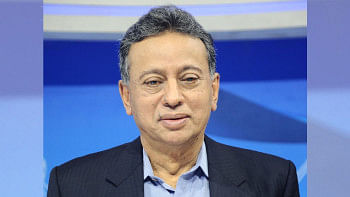The bancassurance breakthrough in Bangladesh

For decades, insurance in Bangladesh has been a tough sell—marked by limited access, low public trust, and a penetration rate that barely scratches the surface. But a quiet transformation is gaining momentum, not through traditional agents or state campaigns, but via a trusted institution embedded in everyday financial life: the banks.
With millions of customers, strong local presence, and long-standing credibility, banks are emerging as the insurance sector's most effective ally. Through bancassurance, banks are now offering insurance directly—merging financial protection with accessibility and trust.
The shift is timely. Although Bangladesh has 82 licensed insurers, only 16.49 million people are covered. The insurance penetration rate remains just 0.46 percent—well below India and Pakistan—signalling both a challenge and an opportunity.
"The opportunity is enormous, but the missing ingredient has always been trust," says Md Main Uddin, Professor and former Chairman of the Department of Banking and Insurance at the University of Dhaka. "People are far more likely to engage with insurance if it comes through institutions they already know and rely on."
Recognising this gap, Bangladesh Bank approved the launch of bancassurance in December 2023. In the first 16 months, the impact has been tangible: 14 banks have received operating approval, and nearly 16,000 life insurance policies have been sold—many to first-time buyers. For the insurance industry, it's more than a new distribution channel; it's a fresh chance to win public confidence and scale up impact.
Ala Ahmad, Chief Executive Officer, MetLife Bangladesh, shares, "Bancassurance holds great potential to complement the traditional agent-led sales channel. It can significantly expand insurance coverage across Bangladesh, especially for customers who may not otherwise engage with insurance providers. While it's still early days, the response has been encouraging."
"Banks are well positioned to promote insurance by simplifying distribution. One of the biggest advantages banks offer is access to a captive client base, which allows for targeted outreach and the creation of a sustainable economic pool," says Ahmed Istiaque Mahmud, Executive Vice President & Head of Bancassurance at Guardian Life.

While banks have started to explore insurance, they are strategically expanding their services through their branches to support customers via their wide-reaching channels.
M Khorshed Anowar, Deputy Managing Director at Eastern Bank, mentions, "We currently offer both life and general (non-life) insurance through our bancassurance model. Our life insurance offerings provide protection in the event of death and other unforeseen circumstances, while our non-life portfolio includes motor, health, and travel insurance."
"Currently, only life insurance services are being offered through our bancassurance partner—National Life Insurance PLC—as this remains the most effective way to reach the majority of the country's population. We have already introduced an affordable short-term life insurance product in the market—Prime Life," states M. Nazeem A. Choudhury, Deputy Managing Director of Prime Bank.
To support their new role in bancassurance, many banks have formed dedicated teams to deliver insurance services.
"We have a dedicated bancassurance team operating both at the head office and across our branch network. They are fully trained and certified, and we work closely with our insurance partners to ensure they have a deep understanding of the products," notes Mahbubur Rahman, Chief Bancassurance Officer, BRAC Bank.
Md Ahsan-uz Zaman, Managing Director & CEO of Midland Bank, states: "To support informed decision-making, we have partnered with insurance companies whose representatives provide proposal forms, brochures, and detailed product literature. This ensures customers fully understand each product's features, terms, conditions, and exclusions before making a purchase."
Midland Bank launched its bancassurance operations this month, as more banks join in amid rising demand and promising prospects.
Ahsan Zaman Chowdhury, Managing Director & CEO of Trust Bank, explains why they are considering launching bancassurance at their institution: 'Our decision to enter the bancassurance sector is driven by a deep understanding of our customers' evolving financial needs. With life's uncertainties increasing, insurance has become an essential tool for ensuring financial stability for families.'
Despite growing optimism, banking and insurance insiders stress that unlocking bancassurance's full potential requires stronger regulation and expanded training, especially from the Insurance Academy.
"Bangladesh has only one insurance academy to train both bank and insurance officials, creating a major capacity bottleneck," says Md Ashanur Rahman, Deputy Managing Director, Chief Economist & Country Business Manager of City Bank. "While we've trained 1,174 staff, our target is 2,500. The growing demand makes it clear that private organisations and insurers must step up to strengthen training capacity and institutional support."
Customer awareness and understanding of bancassurance remain low, underscoring the need for strategic outreach and sustained financial literacy initiatives to drive adoption.
Mohammad Ali, MD and CEO of Pubali Bank, observes, "I feel that the necessary publicity or awareness among customers about bank insurance hasn't really taken off yet. After all, bancassurance is essentially a combination model—we're just providing the support service. But the moment public trust in insurance increases, the model will flourish."

 For all latest news, follow The Daily Star's Google News channel.
For all latest news, follow The Daily Star's Google News channel. 



Comments